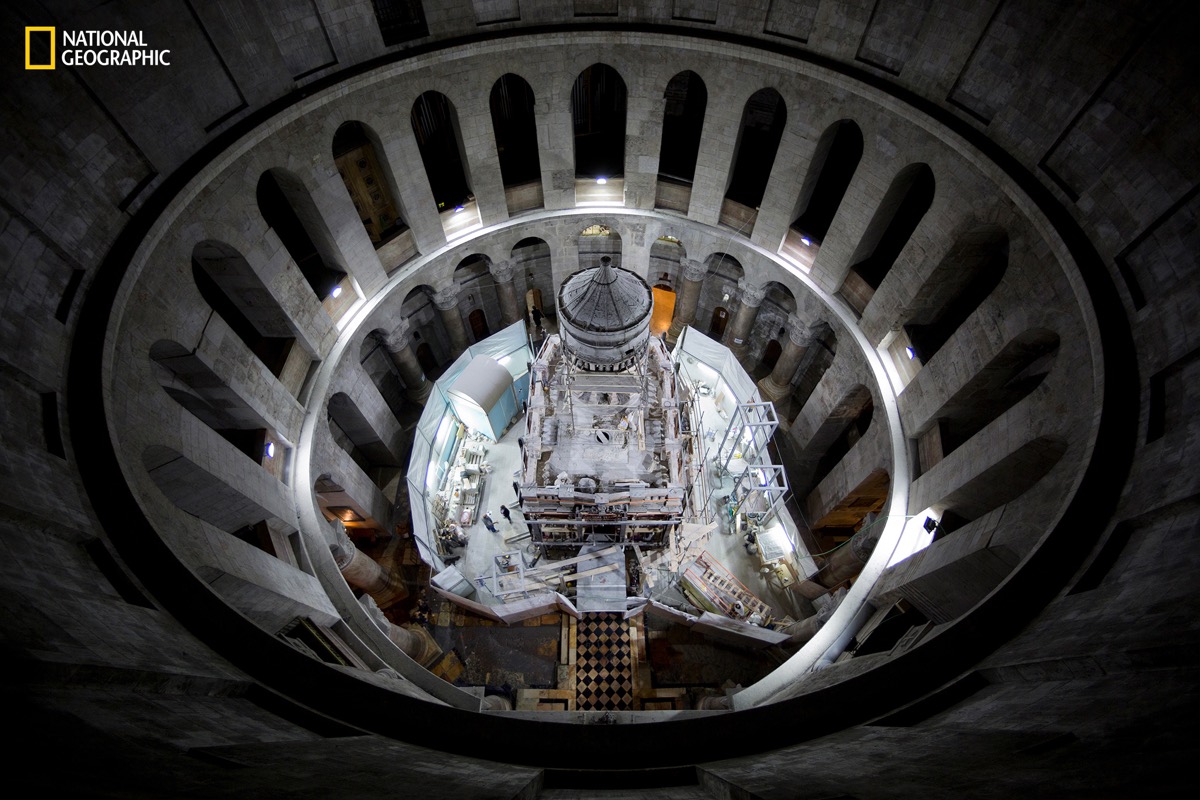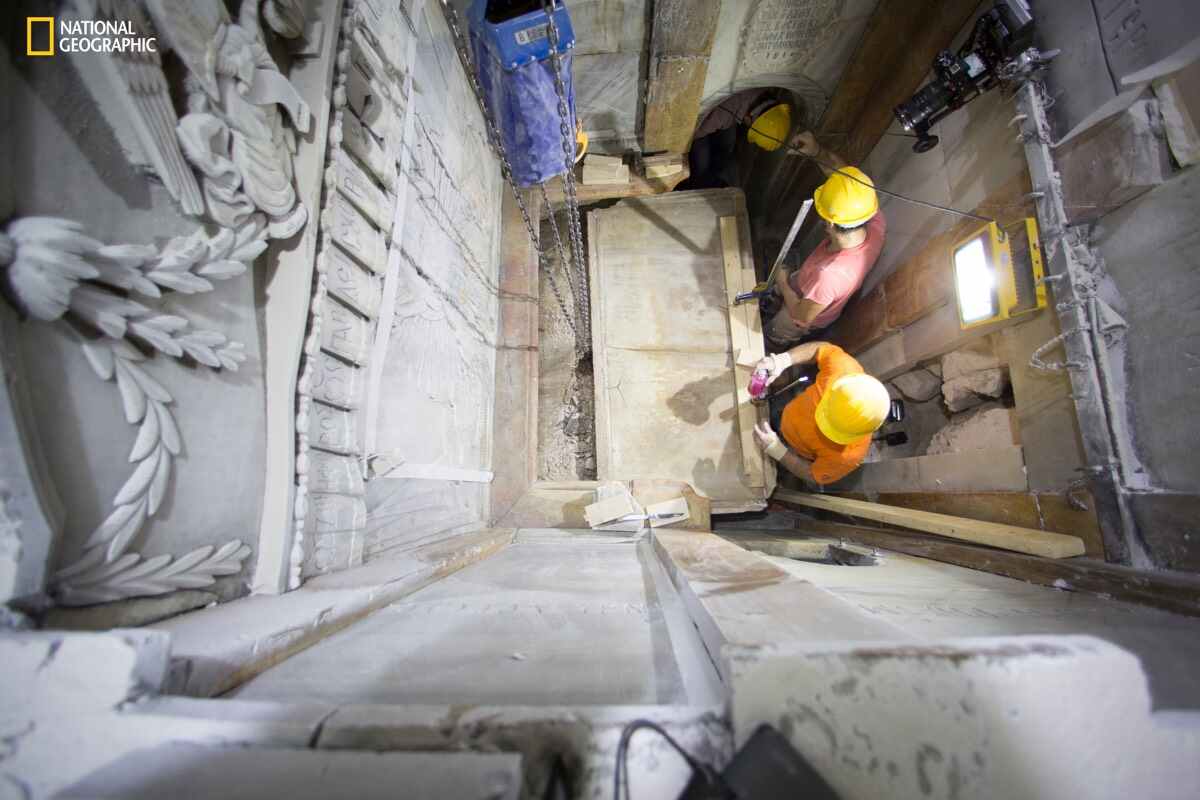Jesus' Tomb Opened for First Time in Centuries

The original rock where Jesus Christ is traditionally believed to have been buried in Jerusalem has been exposed to the light of day for the first time in centuries.
According to an exclusive report by National Geographic, a partner in the project at the Church of the Holy Sepulchre, the original rock surface has been covered with marble slabs since at least 1555, and possibly longer. During a conservation project to shore up the shrine surrounding the tomb, a team from the National Technical University of Athens in Greece realized that they would need to access the substructure of the shrine to restore it, said Fredrik Hiebert, the archaeologist-in-residence at the National Geographic Society. [See Photos of the Church of the Holy Sepulchre]
"The Greek conservation group are the first, as far as we know, to actually open this," Hiebert told Live Science. "It's pretty exceptional."
Holy site
Some theological historians believe that Jesus was a real man who was born sometime around the year 1 or earlier in Bethlehem in modern-day Palestine, only later to move to Nazareth in Israel. He is thought to have died around the year 29.

The site venerated as the tomb of Jesus is encased in structures like a Russian nesting doll. According to the Bible, Jesus was laid to rest on a stone platform in a cave hewn out of a rock wall. In 326, the first Christian emperor of Rome, Constantine, sent his mother, Helena, as a representative to Jerusalem, where locals pointed out one cave among an area of first-century burials that was said to hold the tomb of Jesus.
Constantine had a shrine installed over the cave. The original top of the cave was removed so that pilgrims could look down and view the slab where Jesus' body was said to have rested. This shrine is known as the Holy Edicule, and it was last reconstructed after a fire in the early 1800s, according to National Geographic. [See Images of Jesus' House and Nazareth Artifacts]
The Holy Edicule itself sits within the Church of the Holy Sepulchre or Church of the Resurrection, which is a famed pilgrimage site and working monastery. It's built directly over the cave where Jesus was said to be buried; another wing sits over the site where he is said to have been crucified. Three sects jointly manage the site: the Greek Orthodox Church, the Roman Catholic Church and the Armenian Orthodox Church. The three groups agreed in 1958 that conservation of the Edicule was necessary, but it's taken nearly 50 years to agree on a method and to secure funding. (According to National Geographic, the project will cost more than $4 million.)
Sign up for the Live Science daily newsletter now
Get the world’s most fascinating discoveries delivered straight to your inbox.
"There was a moment in which you could see on the faces of the important people of the church, a certain happiness that this has actually happened," Hiebert said of the conservation.
Shoring up history
A grid of iron bars installed in the 1940s held the Edicule structure upright until the project started. Now, Hiebert said, the Greek team — with years of experience under their belts of shoring up ancient structures like the Parthenon — will inject mortar around the marble slabs that make up the Edicule.
"This will permanently restore them, and it won't need supports," Hiebert said.
The conservation team was surprised at how much of the original cave structure remains, he said. They've peeled back marble slabs from the 19th century that were in turn covering slabs from the 15th century, covering slabs from the 12th century, which themselves shield the original bedrock.
As to whether the tomb ever contained the remains of the historical Jesus, "it's a matter of faith," Hiebert said. There are no remains to analyze or DNA evidence to exhume. There is scholarly debate over whether Jesus even existed, said Robert Cargill, an archaeologist and author of "The Cities that Built the Bible" (HarperOne, 2016). A minority of historians think Jesus was a literary construct, said Cargill, who was not involved in the new tomb project, while others think a real person named Jesus existed but that little is known about him.
"We know that Romans crucified people and that people were buried there" in the first and second centuries, Cargill told Live Science. It's also known that there was an oral tradition about the site of Jesus' burial 300 years later, when Helena came to visit Jerusalem.
"We still don't have any [archaeological] evidence that Jesus was crucified, nor do we have evidence that he was crucified there beneath the Church of the Holy Sepulchre," Cargill said.
Nevertheless, Cargill said, the site is an important one for early Christianity and for the Christian cultural tradition.
"It has been a sacred place for 1,600 years," he said.
The excavations are unlikely to reveal anything new about the history of early Christianity, particularly since the current Edicule structure is only about 200 years old, Cargill said. However, the conservation project has opened up a new view of this old site.
"You can actually look down onto the rock from above, which you couldn't do when the Edicule is actually there," Cargill said. "That's a perspective that most people haven't seen."
Original article on Live Science.
Editor's Note: This article has been update to indicate that it is the "Bible" not the "Hebrew Bible" that mentioned the name Jesus.

Stephanie Pappas is a contributing writer for Live Science, covering topics ranging from geoscience to archaeology to the human brain and behavior. She was previously a senior writer for Live Science but is now a freelancer based in Denver, Colorado, and regularly contributes to Scientific American and The Monitor, the monthly magazine of the American Psychological Association. Stephanie received a bachelor's degree in psychology from the University of South Carolina and a graduate certificate in science communication from the University of California, Santa Cruz.









